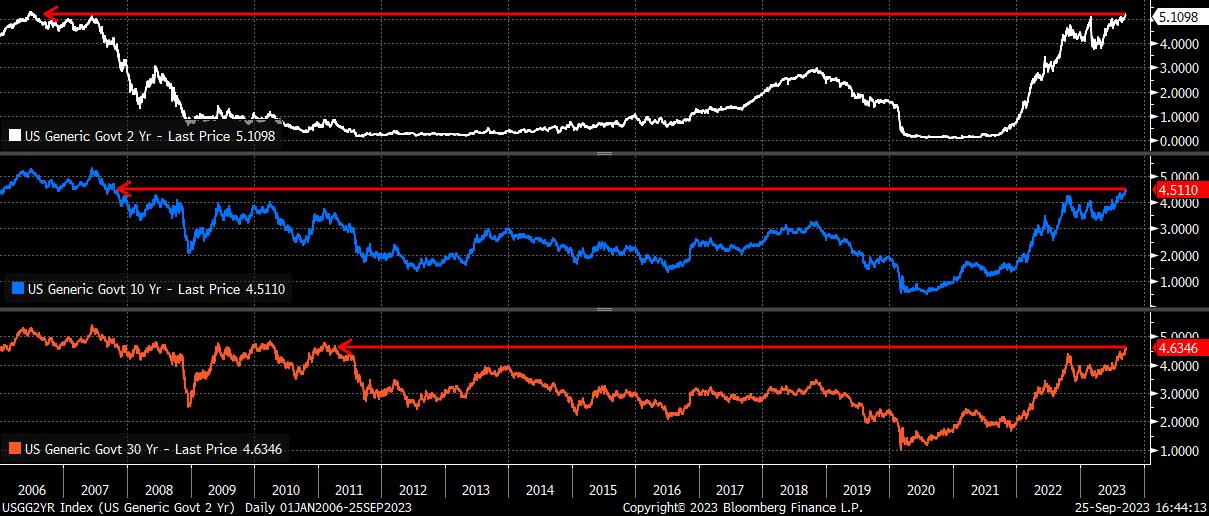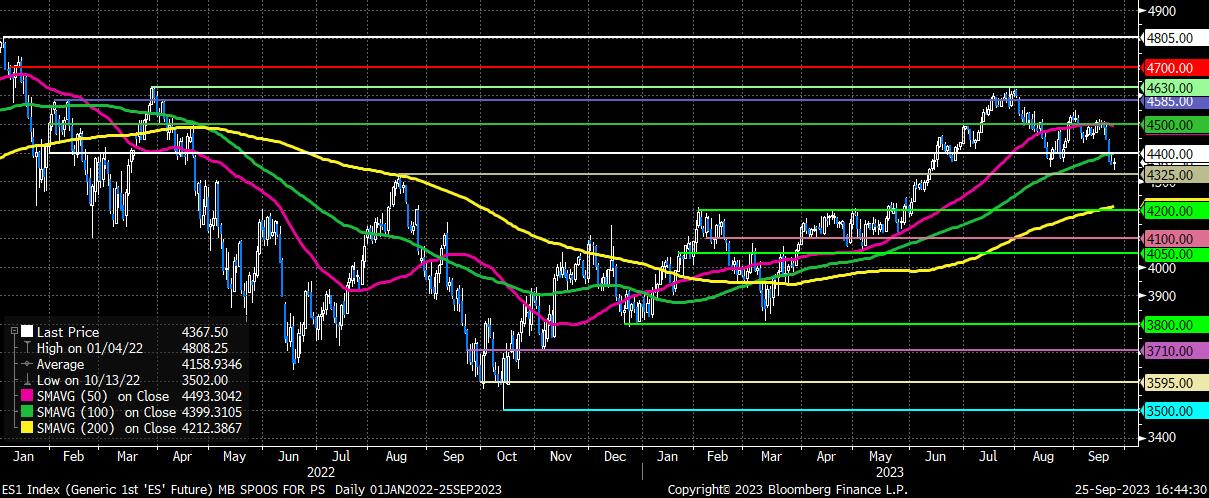- English
- Italiano
- Español
- Français
Analysis
At present, the balance of risks strongly favours the former, with both sides of the so-called ‘dollar smile’ continuing to work in favour of the buck.
On one side, we have the ongoing theme of US economic outperformance, or exceptionalism, spurring demand. Across a host of datapoints, the US is vastly outperforming its G10 peers, experiencing faster disinflation, stronger growth, and a significantly more resilient labour market. Although clearly late cycle, few cracks are starting to show stateside, as they are elsewhere, with the UK inching ever closer towards the remortgaging cliff; the eurozone buckling under the weight of a record high ECB deposit rate, with Germany now the ‘sick man of Europe’; China having failed to experience any form of sustainable economic recovery since the pandemic; and, lastly, Japan still struggling to achieve its inflation target accompanied by strong earnings growth.
Importantly, for the FX market, this has allowed the FOMC to tighten to a greater degree than most G10 peers and, even more importantly, will likely permit the FOMC to remain in restrictive territory for longer than other G10 central banks. The recent ‘dot plot’, pencilling in just 50bp of cuts next year (half the amount foreseen in June) has seen the market pushback its pricing of the first cut to next September, while also resulting in Treasuries selling off to new multi-year highs across the curve, which has bear steepened.

With the exceptionalism side covered, and looking durable, we must turn to the other side of the dollar smile – namely, broad-based risk aversion.
Largely as a result of the more hawkish than anticipated stance from the FOMC, and subsequent rise in Treasury yields, risk appetite has suffered significantly. The S&P 500, for example, has lost around 6% over the last quarter, having now broken below its 100-day moving average for the first time since March, while other risk proxies such as AUD/JPY and AUD/CHF have also come under pressure of late. In times such as these, when a return of capital takes precedence over a return on capital, the greenback has a strong historical tendency to outperform.

Pleasingly, the technical side of the equation supports this fundamental view.
As noted above, the DXY now trades north of the prior YTD high at 105.90, while having also traded briefly above the 106 handle. The bulls appear decisively in control of proceedings here, and while the view may be a popular one, positioning shows few signs of becoming overly crowded, with USD longs broadly in line with the 5-year average, likely posing few hurdles to further gains.
Consequently, the bulls look set to retain the upper hand, likely targeting a move towards the 50% retracement of the decline seen in late-2022 and early-2023 around 107.20. A break below the ascending trend-line which has been in place since mid-July, at 104.90, would put this view under threat.
_D_2023-09-25_16-44-50.jpg)
Importantly, the greenback’s gains may not be experienced equally across the G10 board. Those experiencing the weakest growth dynamics – namely, the GBP, EUR, and CHF – are likely to see the most significant declines, while antipodeans (e.g. the AUD and NZD) may be more insulated, especially if ‘peak pessimism’ has been reached with regards sentiment towards China. A move towards the mid-107s in the DXY would, roughly, equate to EUR/USD at 1.0400, and GBP/USD at 1.2000, levels that seem reasonably over the medium-term.
Related articles
The material provided here has not been prepared in accordance with legal requirements designed to promote the independence of investment research and as such is considered to be a marketing communication. Whilst it is not subject to any prohibition on dealing ahead of the dissemination of investment research we will not seek to take any advantage before providing it to our clients.
Pepperstone doesn’t represent that the material provided here is accurate, current or complete, and therefore shouldn’t be relied upon as such. The information, whether from a third party or not, isn’t to be considered as a recommendation; or an offer to buy or sell; or the solicitation of an offer to buy or sell any security, financial product or instrument; or to participate in any particular trading strategy. It does not take into account readers’ financial situation or investment objectives. We advise any readers of this content to seek their own advice. Without the approval of Pepperstone, reproduction or redistribution of this information isn’t permitted.


